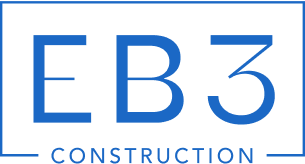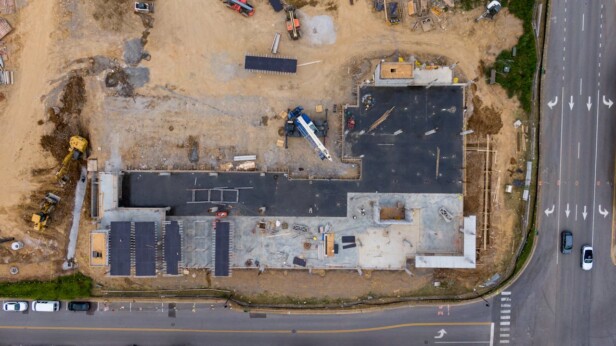Nearly 70% of construction projects face delays, often because teams lack real-time visibility into what’s actually happening on site. Construction progress reporting and tracking solves this challenge by providing continuous monitoring of job status from groundbreaking to final handover.
We use construction progress reporting and tracking as the systematic process of capturing, organizing, and distributing project status information to all stakeholders. This approach keeps project managers, subcontractors, and field crews aligned on current conditions, completed work, and upcoming priorities throughout the construction lifecycle.
Why Does Consistent Progress Reporting Matter On Site?

Consistent progress reporting transforms how we manage construction sites. Rather than reacting to problems after they compound, teams gain the visibility needed to stay ahead of issues that derail schedules and budgets.
On-Time Delivery Through Schedule Visibility
Project schedule adherence depends on knowing exactly where work stands against planned milestones. When teams track progress consistently, they can identify slippage the moment it occurs rather than discovering delays weeks later during routine check-ins.
We see this impact clearly when subcontractors report daily completion rates and any obstacles they encounter. This real-time feedback allows project managers to reallocate resources, adjust sequences, or bring in additional crews before minor delays cascade into major schedule disruptions.
Early detection of variances also enables proactive communication with stakeholders. Instead of explaining why a project ran late, teams can present solutions and revised timelines while there’s still flexibility to recover.
Budget Control and Profit Protection
Construction margins remain thin, making budget control essential for project viability. Consistent progress reporting creates the connection between physical progress and financial performance that many projects lack.
By comparing actual spend to completed work, project managers can spot cost overruns before they become unrecoverable. This visibility helps prevent profit fade, where projects appear profitable until teams discover that costs have outpaced progress.
Progress data also supports more accurate payment applications and change order justifications. When teams document work completion with photos, timestamps, and crew hours, they build the evidence needed to defend costs and maintain healthy cash flow throughout the project.
Rework Prevention Through Sequence Control
Out-of-sequence work creates some of construction’s most expensive mistakes. When trades begin work before preceding activities are properly completed or inspected, the results often require costly corrections.
Regular progress reporting helps prevent these issues by maintaining clear visibility into work readiness. Teams can see when prerequisites are met, when inspections are complete, and when the next trade can safely begin work.
This coordination becomes particularly critical in complex projects where multiple trades work in the same area. Clear documentation of completed work, quality checks, and handoff approvals helps ensure each trade builds on solid foundation work.
Communication and Accountability
Construction projects involve dozens of stakeholders who need current information to make effective decisions. Centralized progress reporting creates a single source of truth that eliminates the confusion and finger-pointing that emerges when different groups work from different information.
When progress updates flow through standardized channels, accountability improves naturally. Subcontractors know their work completion will be documented and reviewed. Project managers can track task assignments and completion rates across all trades.
This transparency also improves relationships with clients and upper management. Regular updates demonstrate active project management and help build confidence in the team’s ability to deliver on commitments.
Enhanced Decision-Making Through Data
Construction decisions improve dramatically when backed by current, accurate data rather than assumptions or outdated information. Consistent progress reporting provides the foundation for these data-driven choices.
Teams gain insight into labor productivity, equipment utilization, and material consumption patterns. This information helps optimize resource allocation and identify areas where processes can be improved.
Progress data also supports better forecasting for future projects. When teams track actual durations, crew sizes, and productivity rates, they can provide more accurate estimates and schedules for similar work.
Risk Mitigation and Stakeholder Alignment
Construction risks multiply when stakeholders operate with incomplete or inconsistent information. Consistent progress reporting keeps all parties aligned on project status, reducing the likelihood of surprises that damage relationships and threaten project success.
Early identification of potential issues allows teams to develop mitigation strategies before problems become critical. Whether dealing with weather delays, supply chain disruptions, or quality concerns, having current information enables faster, more effective responses.
Regular progress communication also manages expectations proactively. When clients and stakeholders receive consistent updates, they’re more likely to support necessary adjustments and less likely to react negatively to challenges that emerge during construction.
How Should Teams Track Progress Day To Day?
Successful job progress tracking requires consistent field data collection through multiple complementary methods. We structure our approach around four core categories that give superintendents and foremen the tools they need to maintain accurate job status documentation.
Daily Logs
Supervisors or foremen complete daily logs to capture essential site information including crew composition, weather conditions, tasks completed, challenges encountered, and milestones reached. These logs form the foundation of project documentation and provide a chronological record of job activities.
We standardize log formats across projects to ensure consistent data capture. Digital daily log tools eliminate handwriting legibility issues and automatically timestamp entries, creating reliable records that meet documentation requirements for change orders and dispute resolution.
Visual Documentation
We attach annotated photos to daily reports to show work progress and flag safety or quality concerns. Photos provide visual proof of conditions, completed work phases, and any deviations from specifications that require attention.
For large sites, we use drone photography to capture comprehensive aerial views that ground-level photos cannot provide. Drone images help document overall site progress, track material deliveries and staging areas, and identify coordination issues between trades working in different zones.
Gantt Charts For Task Coordination
Gantt charts visualize tasks, assignees, durations, and overlapping activities to improve coordination between trades and work packages. These charts help superintendents see which activities depend on others and identify potential scheduling conflicts before they impact the critical path.
However, large, complex, multi-project portfolios often need more sophisticated views than traditional Gantt charts can provide. We supplement Gantt charts with resource loading views and constraint analysis to manage complex interdependencies across concurrent projects.
Integrated Digital Tools
We use time tracking systems to capture actual labor hours against scheduled tasks, providing real-time feedback on productivity and resource allocation. Document management systems centralize purchase orders, invoices, equipment information, and progress images in one accessible location.
Digital daily log tools standardize reporting formats and reduce data entry time while improving accuracy. In fully integrated systems, we connect job costing, accounting and payroll, project scheduling, change order management, and RFIs and submittals to maintain everything in one centralized platform.
This integrated approach eliminates duplicate data entry, reduces errors, and ensures all team members work from the same current information. The result is more accurate job costing, faster change order processing, and improved communication between field and office operations.
How Do You Enable Real-Time Construction Progress Tracking?

Real-time construction progress tracking transforms how we manage project information flow and decision-making speed. The key lies in creating seamless connections between field operations and back-office systems while eliminating redundant data entry that consumes valuable project time.
Field-To-Office Integration
We establish direct data pipelines that send labor hours, purchase orders, and change orders from the jobsite to back-office systems instantly. This integration reduces double entry errors and ensures that cost data flows immediately to project accounting and scheduling platforms. When field supervisors log crew hours or material deliveries through mobile devices, the information automatically populates payroll systems and updates project budgets without manual intervention.
Creating a single entry point means entering project updates once into a centralized system that becomes the definitive source of truth. Instead of maintaining separate spreadsheets, email threads, and disconnected databases, we consolidate all progress information into unified project management platforms. This approach eliminates version control issues and ensures every team member accesses the same current information when making project decisions.
Automated Data Processing
Automated allocations systematically map field costs to the correct project phase and cost type without manual sorting. The system recognizes labor categories, material types, and equipment usage patterns to assign expenses accurately across work breakdown structure codes. This automation improves both speed and precision while reducing the administrative burden on project teams.
Scheduling feedback mechanisms account for real-time updates, change orders, and supply chain challenges directly within project schedules. When material deliveries face delays or weather impacts productivity, the system automatically adjusts dependent tasks and reallocates resources accordingly. This dynamic scheduling approach helps us maintain realistic project timelines and identify potential bottlenecks before they impact critical path activities.
Advanced Data Capture Technologies
We deploy mobile devices, wearables, and 360-degree photography systems to log site conditions and progress issues as they occur. Construction teams use mobile data capture platforms to document daily activities, safety observations, and quality checkpoints directly from the field. Wearable devices can track worker locations, monitor safety compliance, and automatically log productivity data without disrupting normal work patterns.
AI photo analysis transforms visual documentation into quantifiable metrics that estimate percent completion rates and detect deviations from planned work sequences. These systems analyze site photography to validate progress against scheduled milestones and allocated manpower levels. Computer vision technology can identify completed structural elements, installed systems, and material placement accuracy to provide objective progress measurements that supplement traditional reporting methods.
System Synchronization And Documentation
We synchronize all progress updates with work breakdown structure codes and cost accounting categories to maintain data consistency across project management systems. This synchronization ensures that field progress reports align with the latest document control versions and contract specifications. Every progress entry links directly to approved drawings, specifications, and change order documentation.
Automated aggregation processes prompt subcontractors for daily logs while pulling timecard data and delivery documentation automatically. The system shares live project access with internal teams and client stakeholders through secure portals that display current progress status. This transparency eliminates the delays associated with manual report compilation and distribution cycles.
Real-Time Dashboard Implementation
Project dashboards track completion percentages, labor productivity rates, open issues, and safety metrics with customizable alert thresholds and role-based viewing permissions. Project managers see high-level milestone progress and budget variance data, while field supervisors access detailed crew productivity and material consumption information. Safety managers monitor compliance indicators and incident reporting trends through specialized dashboard views.
These dashboards integrate data streams from multiple sources to provide comprehensive project visibility. Cost tracking, schedule adherence, quality control checkpoints, and resource utilization metrics appear in unified displays that support rapid decision-making and proactive issue resolution throughout the construction process.
What Belongs In A Progress Report—And How Often Should You Report?
An effective construction progress report captures the right balance of detail and clarity. We structure our reports around six core sections to maintain consistency and ensure all stakeholders receive actionable information.
Essential Report Contents
Every progress report begins with core project details that establish context and accountability. We include the project name, reporting period dates, specific location or work zone, and report author. This foundation ensures clear identification and proper documentation trails.
The status summary provides the high-level view stakeholders need most. We report overall percentage complete, recent milestones achieved, and any major changes affecting scope or timeline. This section answers the fundamental question of where the project stands against its baseline plan.
Completed work documentation forms the backbone of progress verification. We document finished tasks with supporting photos and formal sign-offs from responsible parties. This visual evidence validates progress claims and creates permanent records for future reference and potential disputes.
Work in progress details capture current activity levels and resource deployment. We list active tasks, crew assignments, equipment usage, and materials currently in use. This information helps coordinate upcoming work and identify potential resource conflicts or bottlenecks.
Issues, Actions, And Forward Planning
The issues and actions section addresses challenges head-on. We document delays with specific causes, outline mitigation steps already taken, and assign responsibility for corrective actions. Clear issue tracking prevents small problems from becoming major cost overruns.
Look-ahead planning and compliance requirements round out each report. We detail next steps, identify task dependencies, include safety observations, and note any budget or resource impacts. Required signatures from key personnel complete the formal approval process.
Report Cadence Based On Risk
Reporting frequency should match project risk levels and schedule criticality. We generate daily reports for critical path activities and high-risk trades where delays can cascade through the entire schedule. Weekly reporting works well for stable work scopes with predictable progress patterns.
Schedule transitions and emerging slippage require increased reporting frequency. When work falls behind baseline schedules, we shift to daily monitoring until teams regain control. This responsive approach catches problems early when corrective action remains cost-effective.
Best Practices For Maximum Value
Effective progress reports extend beyond current status to build forward visibility. We maintain three to six week look-ahead views with dependency mapping and visual schedule overlays. This extended horizon reveals upcoming constraints and resource requirements.
Integration between qualitative observations and quantitative data prevents information silos. We link field notes and photos directly to cost codes and scheduled tasks. This connection ensures progress reports support both project management and financial tracking needs.
Labor and equipment productivity tracking by work package reveals performance trends. We flag underperforming crews or inefficient equipment deployment before productivity issues compound. Regular productivity analysis also improves future project estimates and resource planning.
Look-ahead schedules require dynamic updating with preconditions clearly identified. We track permits, preceding work completion, and material delivery status for all upcoming activities. This proactive approach prevents avoidable delays from derailing project timelines.
Dashboard integration maximizes report value through real-time KPI tracking and trend analysis. We use WIP and cost reports to manage budget variances, client portals for transparent stakeholder updates, and historical data to refine future project forecasts and estimates.
Conclusion: From Reporting To Action

Effective construction progress reporting gives us the real-time visibility needed to manage projects successfully. We connect daily logs, progress photos, scheduling tools, and integrated systems to create a comprehensive view of field conditions, budget performance, and project risks. This approach transforms raw site data into actionable intelligence that drives better decision-making across all project phases.
We implement standardized report templates and align reporting frequency with project risk levels to maintain consistency while capturing the right level of detail. Critical path activities and high-risk trades require daily documentation, while stable scopes can operate on weekly cycles. Our mobile data capture tools link directly to cost codes and WBS structures, ensuring field entries flow seamlessly into budgets and schedules. Regular review of dashboards, WIP reports, and look-ahead schedules helps us spot variances early and course-correct before issues escalate into costly delays or budget overruns.
Ready to implement comprehensive progress reporting on your next project? Contact EB3 Construction to discuss how we can help you establish effective tracking systems.




